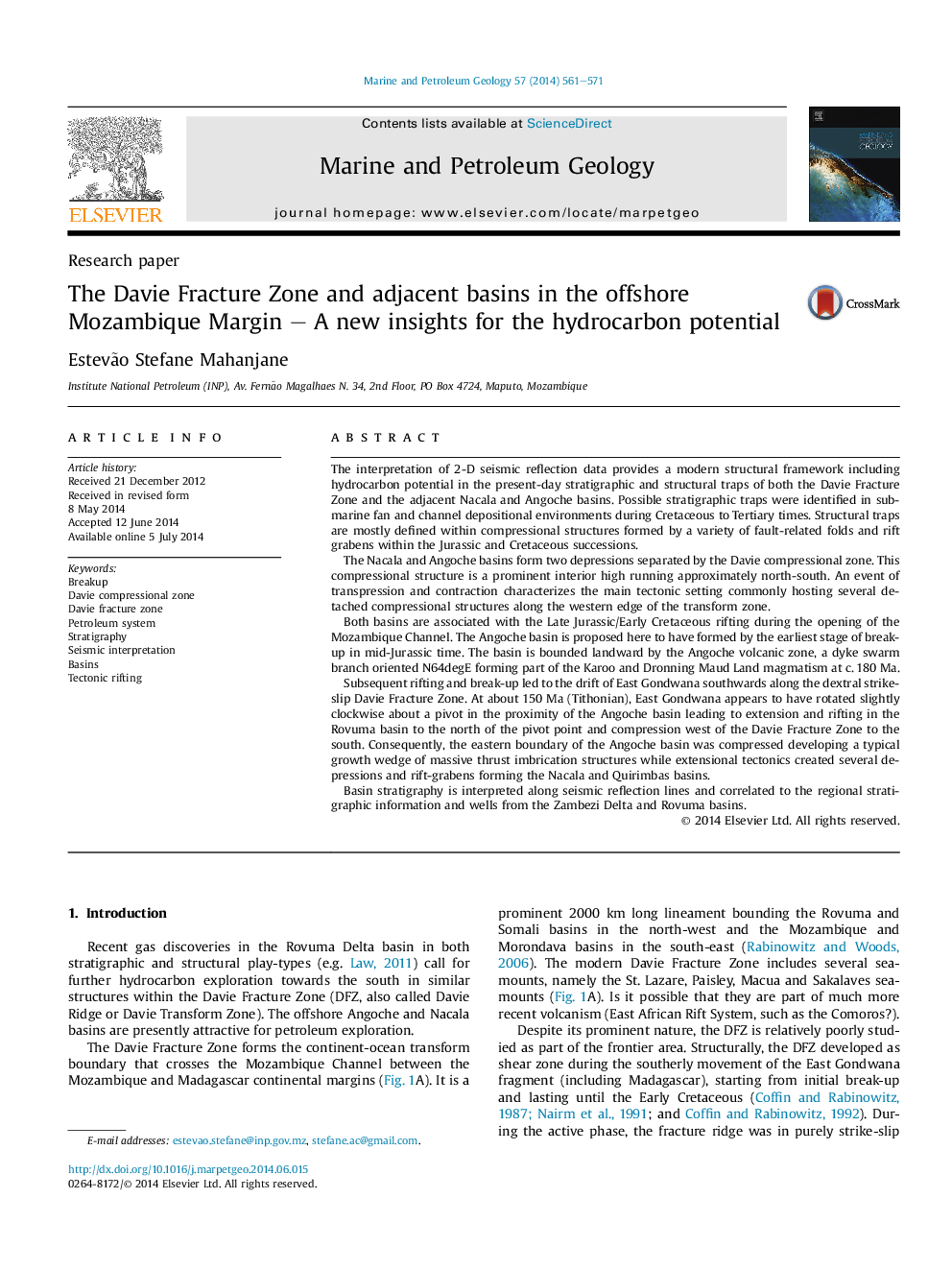| کد مقاله | کد نشریه | سال انتشار | مقاله انگلیسی | نسخه تمام متن |
|---|---|---|---|---|
| 6435400 | 1637167 | 2014 | 11 صفحه PDF | دانلود رایگان |
- The Angoche basin is formed by thermal subsidence during the early rifting phase.
- The Davie compressional zone hosts massive detached thrust-imbrication structures.
- The Nacala basin resulted from extension and rifting during the strike-slip movement.
- The petroleum systems are presented by effective structural and stratigraphic traps.
The interpretation of 2-D seismic reflection data provides a modern structural framework including hydrocarbon potential in the present-day stratigraphic and structural traps of both the Davie Fracture Zone and the adjacent Nacala and Angoche basins. Possible stratigraphic traps were identified in submarine fan and channel depositional environments during Cretaceous to Tertiary times. Structural traps are mostly defined within compressional structures formed by a variety of fault-related folds and rift grabens within the Jurassic and Cretaceous successions.The Nacala and Angoche basins form two depressions separated by the Davie compressional zone. This compressional structure is a prominent interior high running approximately north-south. An event of transpression and contraction characterizes the main tectonic setting commonly hosting several detached compressional structures along the western edge of the transform zone.Both basins are associated with the Late Jurassic/Early Cretaceous rifting during the opening of the Mozambique Channel. The Angoche basin is proposed here to have formed by the earliest stage of break-up in mid-Jurassic time. The basin is bounded landward by the Angoche volcanic zone, a dyke swarm branch oriented N64degE forming part of the Karoo and Dronning Maud Land magmatism at c. 180 Ma.Subsequent rifting and break-up led to the drift of East Gondwana southwards along the dextral strike-slip Davie Fracture Zone. At about 150 Ma (Tithonian), East Gondwana appears to have rotated slightly clockwise about a pivot in the proximity of the Angoche basin leading to extension and rifting in the Rovuma basin to the north of the pivot point and compression west of the Davie Fracture Zone to the south. Consequently, the eastern boundary of the Angoche basin was compressed developing a typical growth wedge of massive thrust imbrication structures while extensional tectonics created several depressions and rift-grabens forming the Nacala and Quirimbas basins.Basin stratigraphy is interpreted along seismic reflection lines and correlated to the regional stratigraphic information and wells from the Zambezi Delta and Rovuma basins.
Journal: Marine and Petroleum Geology - Volume 57, November 2014, Pages 561-571
